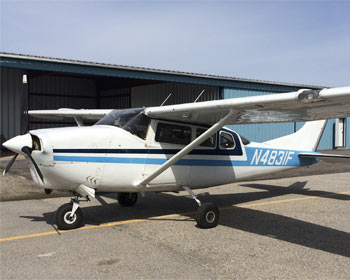

MPC Research Reports |
| Title: | Implementation of Aerial LiDAR Technology to Update Highway Feature Inventory |
| Authors: | Ziqi Song, Yi He, and Zhaocai Liu |
| Publication Date: | Jul 2018 |
| Report #: | MPC-18-356 |
| Project #: | MPC-462 |
| TRID #: | 01635099 |
| Keywords: | aerial surveying, algorithms, asset management, data collection, highways, image processing, inventory, laser radar |
 Highway assets, including traffic signs, traffic signals, light poles, and guardrails, are important components of transportation networks. They guide, warn, and protect drivers and regulate traffic. To manage and maintain the regular operation of the highway system, state departments of transportation need reliable and up-to-date information about the location and condition of highway features. The focus of this project is to analyze the capability and strengths of an airborne data collection system in highway inventory data collection. A field experiment was conducted to collect both light detection and ranging (LiDAR) point cloud data and high-resolution aerial imagery data. A comprehensive introduction to highway inventory methodologies, especially airborne LiDAR technology, was provided. An ArcGIS-based algorithm was developed to analyze and process LiDAR data as well as extract desirable features from raw LiDAR point clouds. In addition, a MATLAB-based drainage grate detection algorithm was proposed to demonstrate the effectiveness and economic efficiency of the airborne data collection system. The detection results were compared with a Mandli dataset. An economic comparison between airborne LiDAR and mobile LiDAR was also provided. From the results of this project, we can conclude that airborne LiDAR technology is a promising method for road inventory data collection.
Highway assets, including traffic signs, traffic signals, light poles, and guardrails, are important components of transportation networks. They guide, warn, and protect drivers and regulate traffic. To manage and maintain the regular operation of the highway system, state departments of transportation need reliable and up-to-date information about the location and condition of highway features. The focus of this project is to analyze the capability and strengths of an airborne data collection system in highway inventory data collection. A field experiment was conducted to collect both light detection and ranging (LiDAR) point cloud data and high-resolution aerial imagery data. A comprehensive introduction to highway inventory methodologies, especially airborne LiDAR technology, was provided. An ArcGIS-based algorithm was developed to analyze and process LiDAR data as well as extract desirable features from raw LiDAR point clouds. In addition, a MATLAB-based drainage grate detection algorithm was proposed to demonstrate the effectiveness and economic efficiency of the airborne data collection system. The detection results were compared with a Mandli dataset. An economic comparison between airborne LiDAR and mobile LiDAR was also provided. From the results of this project, we can conclude that airborne LiDAR technology is a promising method for road inventory data collection.
Song, Ziqi, Yi He, and Zhaocai Liu. Implementation of Aerial LiDAR Technology to Update Highway Feature Inventory, MPC-18-356. North Dakota State University - Upper Great Plains Transportation Institute, Fargo: Mountain-Plains Consortium, 2018.